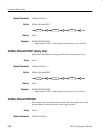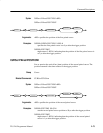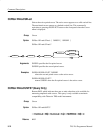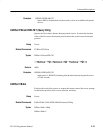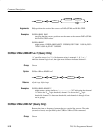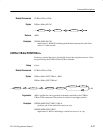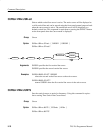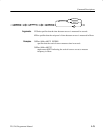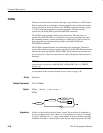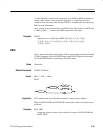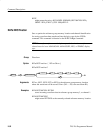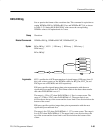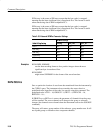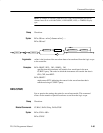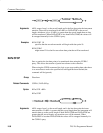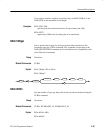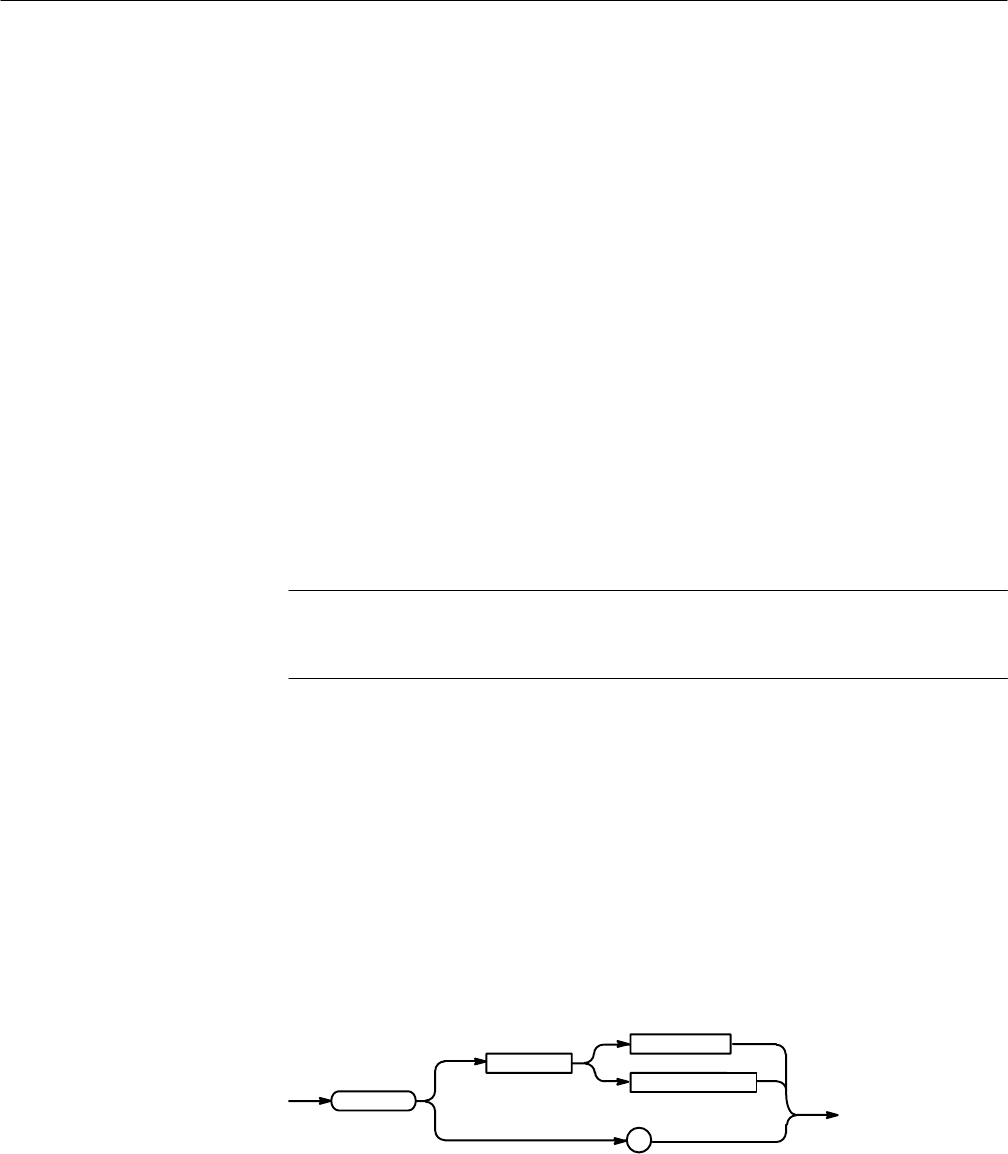
Command Descriptions
2–80
TLS 216 Programmer Manual
CURVe
Transfers waveform data to and from the logic scope in binary or ASCII format.
Each waveform has an associated waveform preamble that contains information
such as data format and scale. Refer to the WFMPre command starting on page
2–322 for information about the waveform preamble. The data format is
specified by the DATa:ENCdg and DATa:WIDTH commands.
The CURVe? query transfers data from the instrument. The data source is
specified by the DATa:SOUrce command. If you specify more than one source,
the instrument returns a comma separated list of data blocks. The first and last
data points that are transferred are specified by the DATa:STARt and
DATa:STOP commands.
The CURVe command transfers waveform data to the instrument. The data is
stored in the reference memory location specified by DATa:DESTination starting
with the data point specified by DATa:STARt. The instrument can transfer only
one waveform at a time. The waveform will only be displayed if the reference is
displayed.
NOTE. To transfer a reference to or from the logic scope, you must set the group
containing the waveform to ANALOGALL, ANALOGSEL, BUS, or TIMING
display type.
A description of the waveform transfer process starts on page 2–36.
Waveform
DATa, WFMPre
CURVe { <Block> | <asc curve> }
CURVe?
CURVe
<Space>
?
<asc curve>
<Block>
<Block> is the waveform data in binary format. The waveform is formatted as:
#<x><yyy><data><newline> where <x> is the number of y bytes. For example,
if <yyy> = 500, then <x> = 3. <yyy> is the number of bytes to transfer including
checksum. If width is 1 then all bytes on the bus are single data points. If width
Group
Related Commands
Syntax
Arguments



